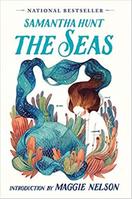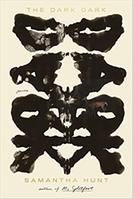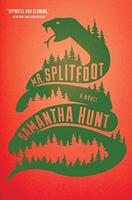 The world of Samantha Hunt's first novel, The Seas, is dark, alcohol-soaked, a bit haunted and, at many points, indistinguishable from the ocean. The protagonist, an unnamed 19-year-old, might be a mermaid, or she might be insane. She is in love with an alcoholic veteran named Jude, more than a decade older than she. They live in a secluded fishing community, where the ocean acts as a sort of draconian security force, keeping them trapped. Like all of Hunt's books, The Seas (Tin House, $15.95) moves seamlessly between reality and hallucination, transforming human bodies into strange creatures, externalizing turbulent internal forces.
The world of Samantha Hunt's first novel, The Seas, is dark, alcohol-soaked, a bit haunted and, at many points, indistinguishable from the ocean. The protagonist, an unnamed 19-year-old, might be a mermaid, or she might be insane. She is in love with an alcoholic veteran named Jude, more than a decade older than she. They live in a secluded fishing community, where the ocean acts as a sort of draconian security force, keeping them trapped. Like all of Hunt's books, The Seas (Tin House, $15.95) moves seamlessly between reality and hallucination, transforming human bodies into strange creatures, externalizing turbulent internal forces.
 In The Seas, this force is the desire the protagonist has for Jude: it invades and distorts her body into an inhuman shape, that of a mermaid. In Hunt's short story "Beast" from her collection The Dark Dark (FSG, $15), a guilty wife sprouts antlers and grows hooves each night while she sleeps. In Hunt's Mr. Splitfoot (Mariner, $16.99), some people turn into shrieking mediums, some are disfigured by chemicals, and one, a woman named Cora, becomes pregnant, a kind of transformation that is not often the stuff of gothic fiction or horror, but is profound nonetheless.
In The Seas, this force is the desire the protagonist has for Jude: it invades and distorts her body into an inhuman shape, that of a mermaid. In Hunt's short story "Beast" from her collection The Dark Dark (FSG, $15), a guilty wife sprouts antlers and grows hooves each night while she sleeps. In Hunt's Mr. Splitfoot (Mariner, $16.99), some people turn into shrieking mediums, some are disfigured by chemicals, and one, a woman named Cora, becomes pregnant, a kind of transformation that is not often the stuff of gothic fiction or horror, but is profound nonetheless.
 As central as these metaphors are to her writing, Hunt emphasizes the humanity, the corporeality of the body. Cora describes the "locked door in [her] stomach" and the "lung-tissue, tiny see-through fingers, hair fine enough to spin webs." The Seas' protagonist experiences her love for Jude through all of her senses: she talks about wishing to drink his sweat, taste the inside of his ears, swallow a piece of his flesh. Hunt discusses the ways that desire often, by some osmotic force, encourages people to take on the mannerisms and habits of their loved ones, to adopt an entirely new body logic. In a canon that is as haunted as it is beautiful, Hunt makes clear just how volatile and extraordinary the human body is. --Emma Levy, publishing assistant, Shelf Awareness
As central as these metaphors are to her writing, Hunt emphasizes the humanity, the corporeality of the body. Cora describes the "locked door in [her] stomach" and the "lung-tissue, tiny see-through fingers, hair fine enough to spin webs." The Seas' protagonist experiences her love for Jude through all of her senses: she talks about wishing to drink his sweat, taste the inside of his ears, swallow a piece of his flesh. Hunt discusses the ways that desire often, by some osmotic force, encourages people to take on the mannerisms and habits of their loved ones, to adopt an entirely new body logic. In a canon that is as haunted as it is beautiful, Hunt makes clear just how volatile and extraordinary the human body is. --Emma Levy, publishing assistant, Shelf Awareness

